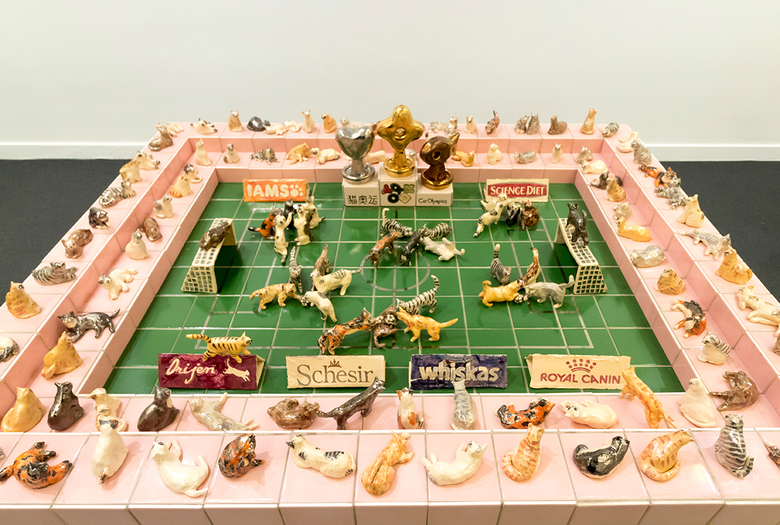Cat Olympics, Capsule Hotels, and Other Things 'Made in Tokyo'
Made in Tokyo, a new exhibition curated by Atelier Bow-Wow at the Japan Society in New York, explores the transformation of Tokyo from the 1964 Summer Olympics to the present day, on the cusp of the city hosting the Olympics once again.
Made in Tokyo: Architecture and Living 1964/2020 opened at the Japan Society on the evening of October 11, when Momoyo Kaijima and Yoshiharu Tsukamoto of Atelier Bow-Wow spoke alongside Shohei Shigematsu of OMA New York. The couple from Atelier Bow-Wow explained how the exhibition sharing the name of their famous 2001 guidebook is not an accident: They realized that a lot of the hybrid buildings presented in the first Made in Tokyo were related to the 1964 Olympics. One of those projects — a park above a parking lot — led the architects to gain a similar commission, a hybrid park that was demolished soon after completion to make way for development spurred by the 2020 Olympics. So out of two strains of their practice came the idea for the second Made in Tokyo, an exhibition that explores transformations to the Japanese metropolis through six types of facilities: Stadiums, Stations, Retail, Offices, Capsules, and Homes.
The exhibition presents projects from around the time of the 1964 Olympics alongside recent projects, thereby comparing, for example, the National Stadium from 1958 and Kenzo Tange's Yoyogi National Stadium from 1964 with Kengo Kuma's New National Stadium now under construction. During the opening, Momoyo Kaijima described how their practice has worked across the six typologies they selected for the exhibition. They designed stadium seating for a giant game of foosball at the Yokohama Triennale 2005; they designed Muji stores with places for students to do their homework after school; and they highlighted their own home and studio in Shinjuku. Though full of projects by other architects, the duo explained in effect how the exhibition is highly personal.
Below is a brief tour through Made in Tokyo, which Atelier Bow-Wow both curated and designed.
Articoli relazionati
-
JR Nippo Main Line Kirishima-Jingu Station Renovation
Takuma Kawaguchi Architect & Associates | 03.03.2025 -
-
-
-









